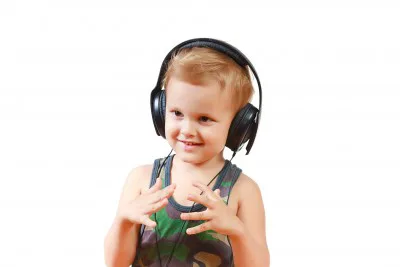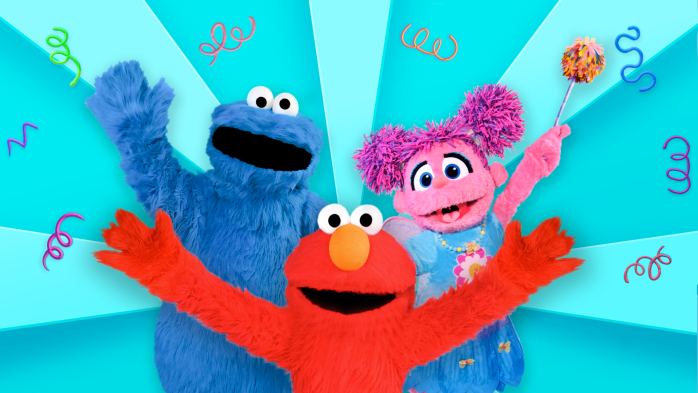Speech disorders, which include stuttering, affect five to 10 percent of all kids, can have affects on social interactions and behavior as well as self-esteem. Boys are about four times more likely to have speech disorders than girls.

Typical Diagnosis
A speech disorder, also called speech impairment, can refer to a number of conditions in which a child has trouble communicating verbally, whether it’s due to a neurological problem with forming words and sentences or a mechanical problem stemming from the physical development of the mouth/jaw area. Because speech is a marked indicator of a child’s overall growth and development, a speech delay or disorder usually becomes apparent in the first few years of a child’s life, allowing time for early intervention.
Speech disorders fall into two general categories: disfluencies and articulation abnormalities. Disfluencies are rhythm disorders that are usually characterized by the repetition of a sound, word, or phrase. Stuttering, which is characterized by involuntary repetition, prolongation, or hesitation while speaking, is perhaps the most well known example of disfluency. Articulation disorders involve sounds made incorrectly or inappropriately. A child with such a disorder might omit sounds in certain words (ba for ball), substitute one sound for another (wun for run), add extra sounds into words, or distort sounds.
Often speech impairment can be a secondary diagnosis stemming from a larger problem, such as autism, hearing impairment, mental retardation, Tourette’s syndrome, or schizophrenia. A speech disorder may also be the product of verbal apraxia, a neurological disorder that causes difficulty in planning the physical movements necessary for speech (seen mainly in children on the autism spectrum). Alternatively, it could be caused by physical abnormalities like cleft palate, injury to the mouth area or vocal chords, or ankyloglossia (tongue tie). Frequently, though, the cause of a speech disorder is unknown.
Speech disorders affect five to 10 percent of all children. Boys are about four times more likely to have speech disorders than girls.
What it Means for Your Child
Because speech is one of the primary ways we communicate, a speech disorder can have a marked impact on a child’s social interactions. The struggle to communicate effectively with others can lead to low self-esteem and other psychosocial problems. As a child gets older and more self-conscious, articulation problems can lead to behavioral and social troubles as well. Children who are aware that they have a speech problem often don’t enjoy communicating, and tend to shy away from social situations. Kids who “talk funny” are sometimes teased by their peers.
In moderate to severe cases, a child faces the inability to express his basic wants and needs. Dawn La Clair, a speech-language pathologist based in Brooklyn, watched the frustration that accompanies this disorder when her young son Aidan, who stutters, attempted to give his order to the neighborhood ice cream man. After struggling to get out the word “chocolate”—his favorite flavor—Aidan finally gave up and said “vanilla” instead.
What it Means for You
The child will likely need to attend sessions with a speech pathologist once or twice a week. While parents don’t normally participate directly in therapy sessions, they are often encouraged to meet with the therapist separately, to learn how to reinforce lessons at home. Since repetition is an important aspect of speech therapy, it is important for parents to help him carry over the work done in therapy sessions and apply it to everyday situations. Experts also encourage parents to be open about their child’s speech disorder with teachers, coaches, and friends. Finally, they should be a good role model for their child by using proper speech and pronunciation.
What it Means for Your Family
As children develop language and acquire vocabulary, they may use broken speech or have trouble expressing themselves. This is part of normal development. However, research has shown that placing excessive attention on disfluency can encourage a chronic disorder to develop. Parents and siblings should therefore be cognizant that the best way to prevent a speech disorder such as stuttering is to avoid paying negative attention to (i.e. punishing or making fun of) the disfluency. Instead, family members should listen patiently to the child without interrupting, make eye contact, and show love and acceptance.
Treatment
Speech abnormalities are common in very young children and are part of their natural development, says Kathleen Moran, MA CCC/SLP, a speech pathologist at Bergen Pediatric Therapy Center in Westwood, New Jersey. For example, many children stutter as they begin to speak; about two to five percent of children ages 2 to 5 go through a brief stuttering period, but less than one percent develop a chronic disorder (of which the causes are unclear). “A lot of times, young children’s thoughts are working faster than their musculature can compensate for, so they’ll repeat or get stuck on a word,” Moran says. “But a lot of kids will grow out of it as their body catches up to their mind.” Moran says treatment for persistent stuttering and other disfluency disorders begins between the ages of 4 and 6. Speech therapy is the recommended route of treatment, but the approaches to this type of therapy vary greatly. But most children, about 80 percent, who start stuttering before the age of 3 go on to become fluent speakers whether or not they receive therapy. As with most disorders, prognosis improves with early intervention.
A child suffering a physical ailment that affects his speech may undergo short-term oral-motor therapy with a speech therapist, which works to strengthen the muscles necessary for speaking.
When the root of the speech problem is neurological in nature, as with children on the autism spectrum, children again see a speech therapist and may undergo play-based therapy and/or applied behavioral analysis (ABA). Moran, who uses play-based therapy with her patients, explains that children learn the proper way to use the language through games, role playing, and working on a computer. ABA therapy includes more one-on-one interaction with the child and therapist and often includes a reward system. In both cases, Moran says, children come to therapy once or twice per week and parents are encouraged to reinforce lessons at home. Speech therapy usually tapers off around age 8, when children encounter more organic social situations such as school and sports and continue learning through real-life experiences. “They might never be the most socially perceptive child, but if they can get by-if they can go out with friends and lead more or less a normal social life-that’s what you want,” Moran says.
Get support
American Speech-Language-Hearing Association (ASHA)
Apraxia-KIDS: The Childhood Apraxia of Speech Association of North America
The Children’s Hearing Institute
FRIENDS: The National Association of Young People Who Stutter
National Stuttering Association (NSA)
Our Time Theatre Company (NYC-based program for kids who stutter)
National Institute on Deafness and Other Communication Disorders
Stuttering Foundation of America
Give support
Most of the above organizations are involved in research and fundraising efforts for speech disorders. Visit their sites for more information on how you can get involved and/or make a difference through a donation.
Learn more
Speech, Language, and Hearing Milestones: Birth to Age Five
This DVD includes many examples of normal speech, language, and hearing development in children, including tips on how to recognize a delay or disorder and when to seek treatment. $15. .
Beyond Baby Talk: From Sounds to Sentences, A Parent’s Complete Guide to Language Development by Kenn Apel, Ph.D.
This books details how to monitor your child’s language development and recognize problem signs. It also includes easy and engaging ways to help your child develop good communication skills. $17.
Childhood Speech, Language & Listening Problems: What Every Parent Should Know by Patricia McAleer Hamaguchi
This book, by a speech-language pathologist, covers how to recognize the most common speech, language, and listening problems in children; when to seek treatment; where to find the right specialist and what to ask them; treatment details; and tips for helping your child at home. $16.95.
It Takes Two To Talk: A Practical Guide For Parents of Children With Language Delays by Jan Pepper and Elaine Weitzman
A guide to recognizing language delays that includes advice on how to communicate with your child and engage him to speak through easy daily routines. The book is a product of the Hanen Centre (www.hanen.org), which strives to provide parents, caregivers, early childhood educators, and speech-language pathologists with the knowledge and training they need to help all preschool children develop the best possible language, social, and literacy skills. $54. Available at www.amazon.com.
Jeremy and the Hippo: A Boy’s Struggle with Stuttering by Gail Wilson Lew, MA, CCC-SLP
This beautifully illustrated book is about a boy named Jeremy and a hippo that follows him everywhere. Not only does the hippo follow him, but also whenever Jeremy stutters the hippo becomes gigantic, causing some embarrassing and funny situations. In the end, Jeremy learns to deal with his stuttering and becomes friends with the hippo. Ages 4-7. $7.
Mary Marony book series by Suzy Kline
The protagonist, Mary Marony, is a second grader who stutters at times. The series features Mary’s everyday struggles with stuttering and other aspects of growing up. Ages 4-8.
Related Articles:
Stuttering in Children: Diagnosis, Treatment, and Finding Support
Alternatives to Speech Therapy for Stutterers


















